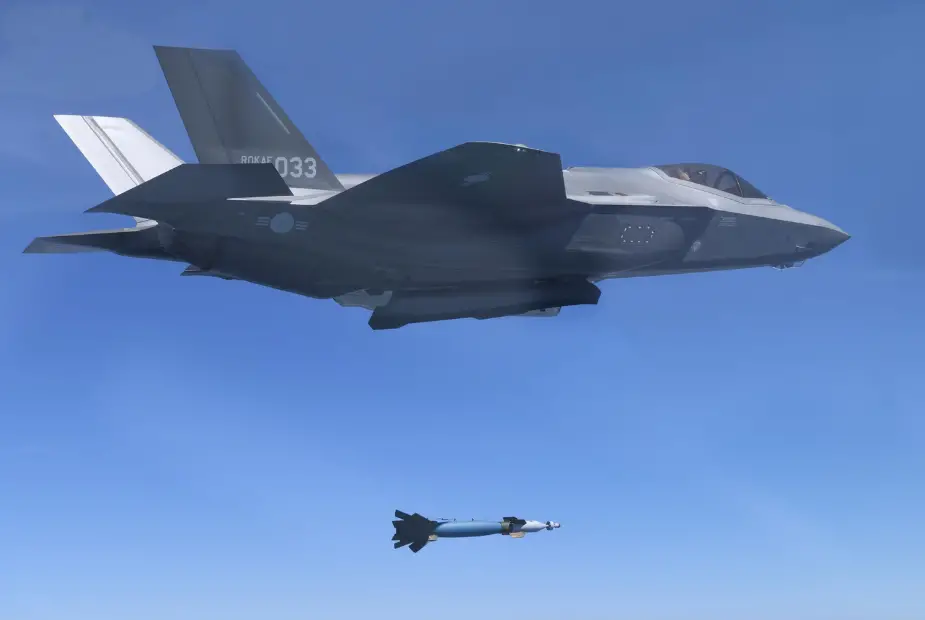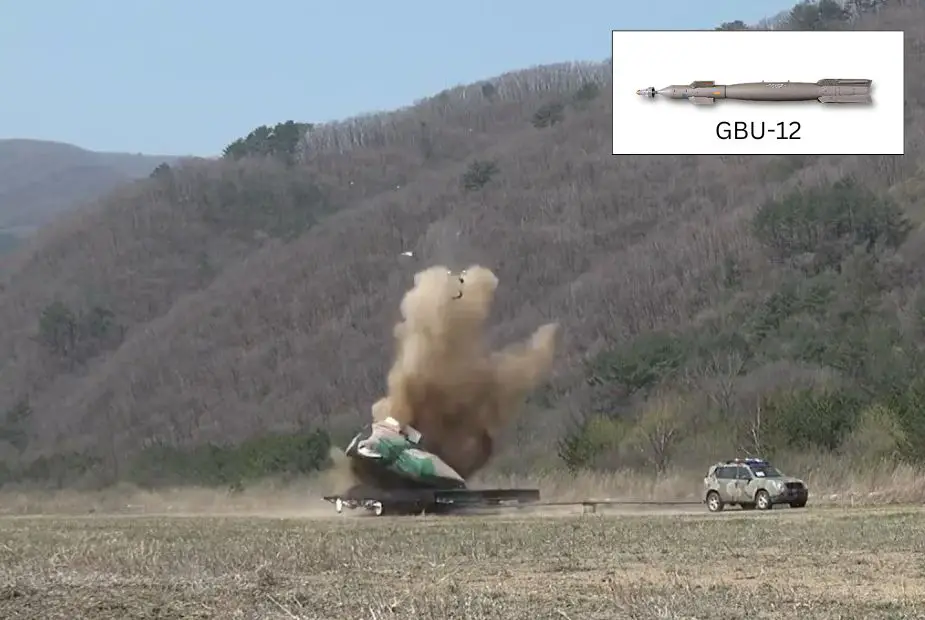Korea Simulates Attack on North Korean Missile System Mockup with F-35 Fighters and GBU-12 Bombs
On April 19, 2024, the US and South Korean air forces conducted live-fire training at the Pilsung Range. This training included the use of GBU-12 laser-guided bombs, designed for precise strikes on North Korean missile launcher vehicles, utilizing South Korea's recently equipped F-35A stealth fighter jets.
Follow Army Recognition on Google News at this link

Live firing of the GBU-12 air-to-ground guided bomb by the joint ROK-US formation and joint formation flight carried out (Picture source: Bemil)
Amid rising tensions following North Korea's launch of an intercontinental ballistic missile, the armed forces of the Republic of Korea and the United States recently carried out joint military exercises to strengthen their preparedness for conflict. These exercises, held from April 12 to 26, 2024, featured simulated bombing missions on North Korean missile facilities, demonstrating the coordinated strike capability of the allies.
On April 18, 2024, a formation flight involving combat aircraft from both nations flew over the West Sea, showcasing the strength and synchronization of their aerial capabilities. The squadron included a US Marine Corps F-35B, two US Air Force F-16s, two ROK Air Force F-15Ks, and two more ROK Air Force F-16s.
Japan’s Defense Minister, Yasukazu Hamada, stated that the missile launched by North Korea on November 18, 2023, had a range potentially sufficient to reach the entire US mainland, highlighting the severity of the threat. This statement followed North Korea's launch of over 50 missiles in the past two months, mostly short-range, but also including intercontinental missiles capable of carrying nuclear payloads internationally.
In response, the joint South Korean and American exercises not only tested the effectiveness of direct interventions against strategic targets but also sent a clear message to North Korea about the consequences of its provocative actions.

The GBU-12 bombs used in these exercises are equipped with an enhanced inertial navigation system and GPS, allowing for precise strikes even in bad weather, thus increasing operational effectiveness (Picture source: Bemil/ U.S Air Forces )
The Paveway II Plus LGB (Laser Guided Bomb) is a high-precision, lightweight munition developed jointly by Lockheed Martin and Raytheon. It is distinguished by its enhanced reliability and accuracy, enabling combat aircraft to engage targets in adverse conditions with great effectiveness.
The Paveway II Plus is available in several variants, including the GBU-10, GBU-12, and GBU-16, based respectively on the MK-84, MK-82, and MK-83 unguided bombs. These munitions are suitable for a variety of air warfare missions and are designed to be compatible with existing Paveway II weapon handling systems. Their advanced guidance system transforms conventional bombs into precision-guided munitions, increasing the ability to hit targets with remarkable accuracy.
The GBU-12 bombs used in these exercises are equipped with an enhanced inertial navigation system and GPS, allowing for precise strikes even in bad weather, thus increasing operational effectiveness.
The joint exercise was described as a demonstration of the allied forces' ability to conduct precise and stealthy strikes, critical in the context of escalating regional tensions. These military maneuvers, conducted in direct response to provocations from Pyongyang, underscore the readiness and resolve of the United States and the Republic of Korea to maintain regional stability amid ongoing security challenges.
Defense News April 2024
- Hits: 1689
















